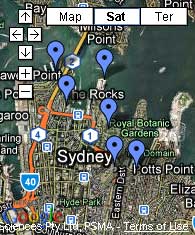Richard Grayson - Artist Talk
Video produced by Caddie Brain and Tega Brain from COFA Online
About Richard Grayson
Born 1958 in Morcambe, England
Lives and works in London, England
Richard Grayson is an artist, writer and curator based in London. A practising artist since 1979, he was co-founder of the Basement Group in Newcastle upon Tyne (1979–84), an artist-run project and venue that hosted performances and commissioned ‘live art’, later becoming Projects UK. Throughout his career, Grayson has been involved with creating and organising experimental art events, with notable appointments including Director of the Experimental Art Foundation, Adelaide (1992–98) and Artistic Director of the 13th Biennale of Sydney in 2002, ‘(The World May Be) Fantastic’.
Grayson’s photographs, text-based works, drawings and videos blend humour, curiosity and a deep thoughtfulness about the way the world works – as well as the way we think it works. Preconceptions, received information, history and systems of belief are persistent targets, and past works include a series of paintings listing things he does not understand (Negative Space (Things I don’t understand), 2000), spiralling texts predicting the end of the world (Ways the World Ends, 2002–03), and star charts of government figures involved with Middle East politics (Intelligence, 2004–05) – all question established systems of knowledge and understanding.
In a recent large-scale video installation, The Golden Space City of God (2009), Grayson wrote a libretto based on the beliefs of The Family, a community that grew from the 1960s’ religious sect The Children of God. The text gives a detailed forecast of events that commence with political and social unrest caused by the collapse of oil-based economies, move into the rise of the Antichrist as a political mastermind aided by an all-powerful robot, and then lead to the end of capitalism, with the return of Jesus and the rule of the earth by Christ and his saved, who have been given special powers and indestructible bodies. Mixing ‘last days’ biblical prophecy with science fiction imagery, the piece was performed in San Antonio, Texas by a 26-member choir.
Messiah (2004) is based on George Frideric Handel’s well known 1742 oratorio, The Messiah. With the help of Australian country and western band The Midnight Amblers, Grayson transforms Charles Jennens’ original text into a spirited, country rock offering with scary fundamentalist overtones, effectively recalling it from the ‘high culture’ of choirs and classical recitals into a reanimated, hoe-down offering that brings to mind the Christian Right of the United States. The resulting video, shown over two screens, refers to the rise of religious rhetoric in political policy. By injecting the spiritual into contemporary art – anathema to the modern, secular autonomous rationalism of the twentieth century – the artist provokes consideration of the many different spaces where group beliefs and identities are formed.
































